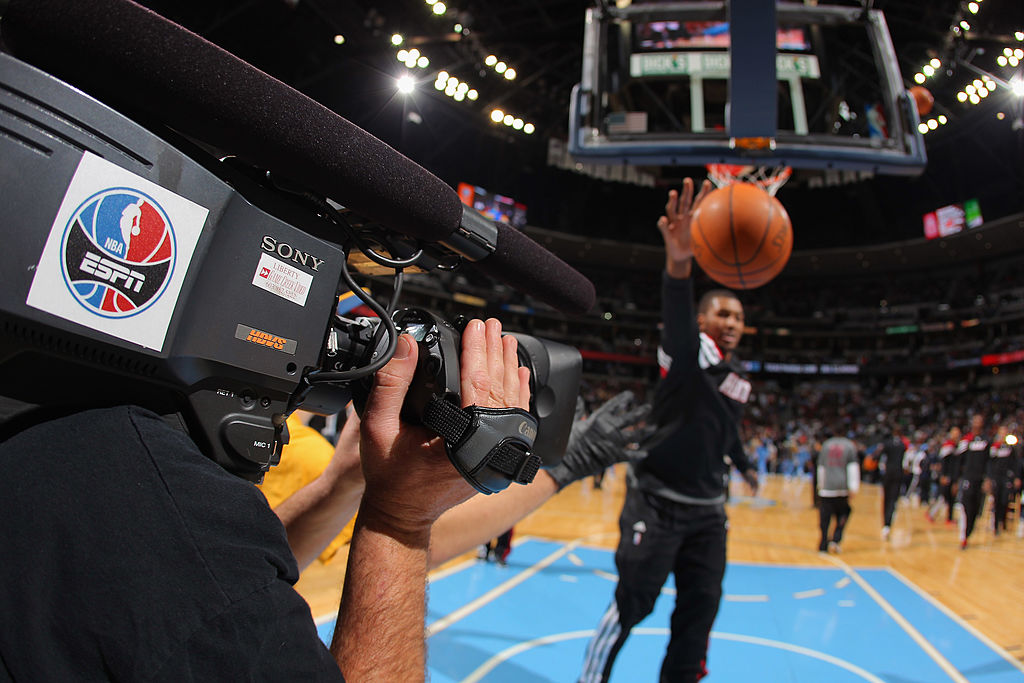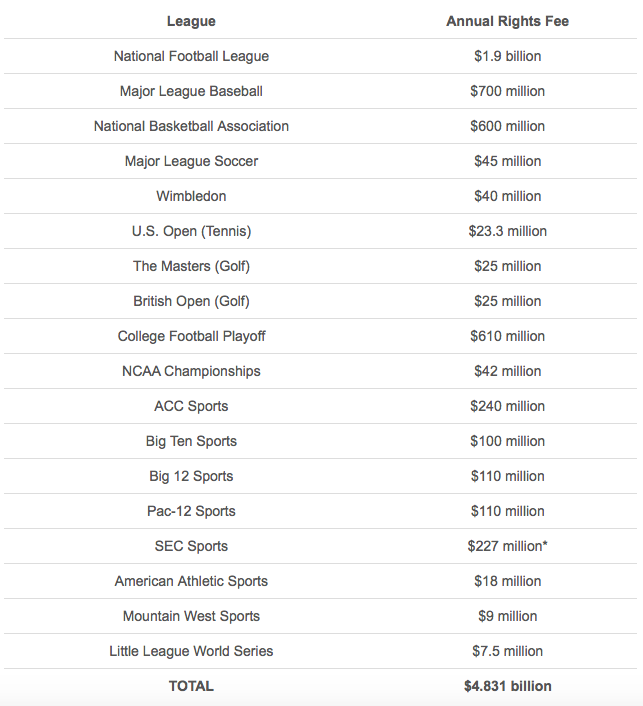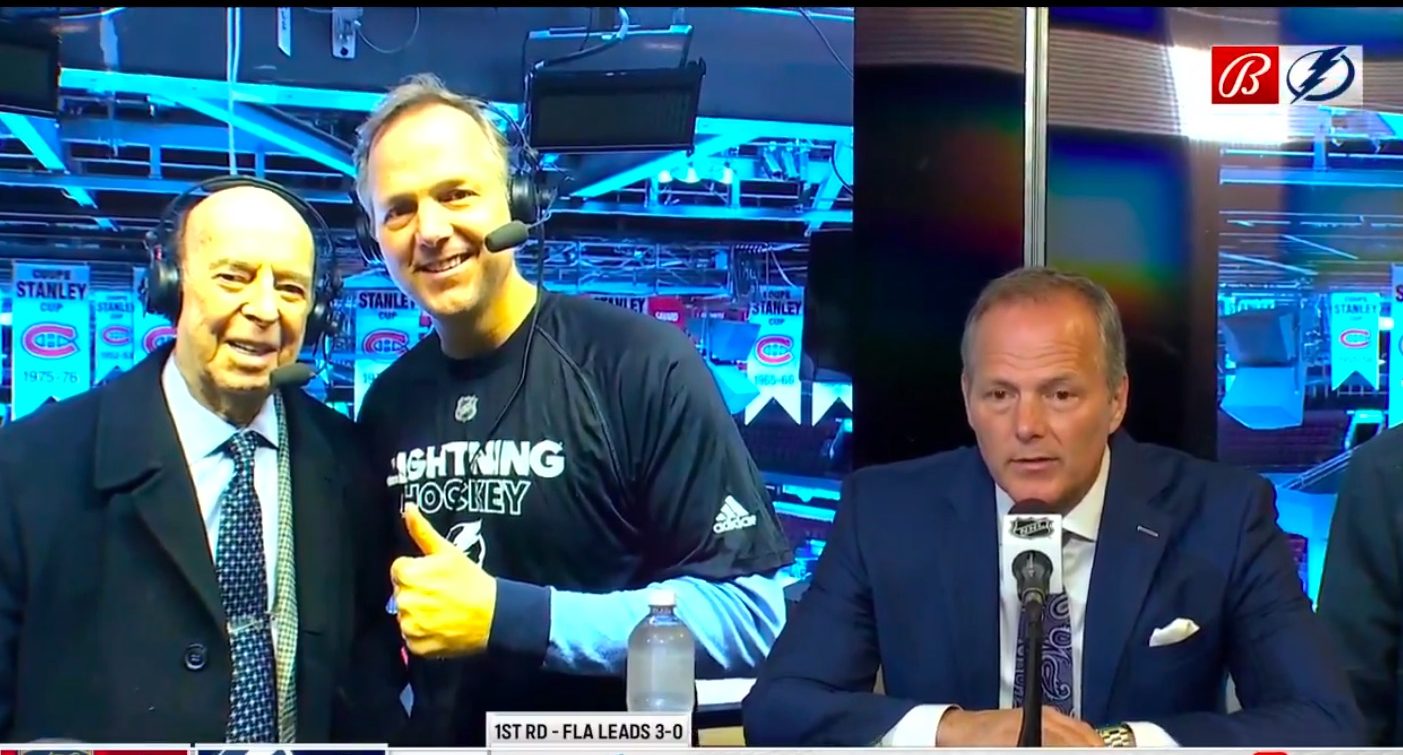Ed Note: The following appears courtesy Dave Warner at What You Pay For Sports.
The Walt Disney Company dropped a bomb last month when they admitted in their 10-K filing that ESPN lost 7 million subscribers over the last two years. Everyone from Clay Travisto Ken Fang to Karl Bode has chimed in on the topic, with many pundits suggesting that this is not only clear evidence of cord cutting, but it’s also the beginning of the end for “The Worldwide Leader In Sports”.
That’s partially true. Cord cutting is a definite trend; as this table of Nielsen data published by Sports Business Journal reveals, nearly 4.5 million homes dumped their cable or satellite television service between October 2014 and October 2015, and many major cable networks suffered big losses over the last two years. ESPN and ESPN2 were hit the hardest over that span.
Clearly, TV consumers are becoming more savvy. They’re learning how much they’re paying for channels they don’t watch and where that money goes, and they’re opting out in favor of cheaper, more convenient streaming services like Netflix and Amazon Prime. ESPN has also been hurt by cable companies offering smaller bundles featuring only local channels and HBO.
But is the sky really falling in Bristol? It’s easy to look at a loss of 7 million subscribers as a disaster for ESPN, but consider this:
- From October 2013 to October 2014, ESPN and ESPN2 lost 3,635,000 homes, or roughly 3.67% of its subscriber base.
- From October 2014 to October 2015, ESPN and ESPN2 lost 3,484,000 homes, or roughly 3.66% of its subscriber base.
As we know from this report, however, ESPN’s carriage deals with pay TV services call for a 6.5% annual increase in their carriage fees. Those annual fee increases are still outpacing the annual subscriber losses.
That’s not to say money is not disappearing from ESPN’s bottom line. The chart below shows how those subscriber losses have impacted the bottom line for ESPN and ESPN2 in the last 12 months:
A few notes about this chart:
- The carriage fees listed above are the combined fees for ESPN and ESPN2, as reported by SNL Kagan throughout the last 12 months.
- The subscriber numbers in bold are actual numbers reported by Nielsen, with estimated subscribers in between.
As you can see, more than $147 million disappeared from ESPN’s bottom line in 12 months. This might help to explain a few of the networks recent cost-cutting moves, including:
- Laying off 350 employees in October
- Opting not to renew the contracts of Bill Simmons, Keith Olberman, and Colin Cowherd
- Suspending the publication of Grantland
- Asking the Atlantic Coast Conference to push back the launch of a dedicated ACC Network
We can also note that the rate at which ESPN is losing subscribers is increasing. From October 2014 to February 2015, ESPN lost an average of 209,250 homes per month. From July 2015 to October 2015, ESPN lost more than 389,000 homes per month. That’s a fairly big jump in people jumping ship.
However, we can look at this data another way. If SNL Kagan’s carriage fee estimates are accurate, ESPN and ESPN2 still made nearly $8.3 billion in carriage fees in Fiscal Year 2015. Add in the fees from ESPNU (~$188 million), ESPNEWS (~$180 million), and SEC Network (~$547 million), and ESPN collected more than $9.2 billion from pay TV subscribers during that period.
As a reminder, here’s an estimate of what ESPN paid in TV rights fees during that period:
* – ESPN splits SEC Network profits with the conference. The SEC received $150 million from ESPN’s primary rights deal, plus approximately $77 million from SEC Network for the 2014-15 season.
So in FY2015, ESPN needed only 52.5% of its rights fees to cover the bulk of its massive sports rights catalog. That doesn’t sound like a network suffering mightily from cord cutting just yet.
Still, the costs of that rights fee catalog are escalating quickly. ESPN is on the hook for more than $13 billion with its new 9-year TV deal with the NBA, which kicks in next year. The current Big Ten deal expires in 2017, too, and ESPN will likely have to pay much more than $100 million per year to keep the Big Ten — even if it ends up splitting the rights with Fox Sports, as it does with the Big 12 and Pac-12.
If the rate of cord-cutting accelerates, ESPN could face a scenario where its carriage fee revenue decreases as its rights fee costs increase. Based on current trends, that scenario might not happen for another two years. What happens, though, when that Monday Night Football deal expires in 2022? Or when that $700-million-per-year Major League Baseball deal expires in 2021? Could ESPN find itself in a position where it simply can’t afford to pay the leagues’ asking price?
On the other hand, if cord cutting hits all the other cable sports networks just as hard, could the leagues simply be forced to accept less money, like the Premier League did from Sky Sports in 2004?
Wall Street has punished Disney for ESPN’s subscriber losses, but the network itself is still a behemoth, and it still has time to adapt to the changing television market. That market, however, is rejecting the idea of paying for channels it doesn’t watch. Eventually, ESPN will have to market directly to sports fans who are willing to pay to watch the big games. That day isn’t here yet, but it’s coming. Will the boys in Bristol be ready when it arrives?








